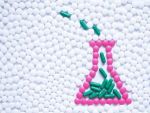Chitosan in microfluidic systems
In microfluidic systems, analyses can be performed on a miniaturized scale without the use of complex laboratory equipment. In this context, DNA purification and concentration pose a particular challenge. To improve this, a disposable microfluidic device is functionalized with different chitosans for DNA binding in the presented study. This will then be used to detect eDNA of invasive species from river water samples.



 In this rubric we present you scientific news from the world of chitin and chitosan. Monthly you can find recent publications. We hope to arouse your interest in this biopolymer or to help you out. If you have any comments or if you do chitin or chitosan research and you want to publish your article on this page,
In this rubric we present you scientific news from the world of chitin and chitosan. Monthly you can find recent publications. We hope to arouse your interest in this biopolymer or to help you out. If you have any comments or if you do chitin or chitosan research and you want to publish your article on this page, 




